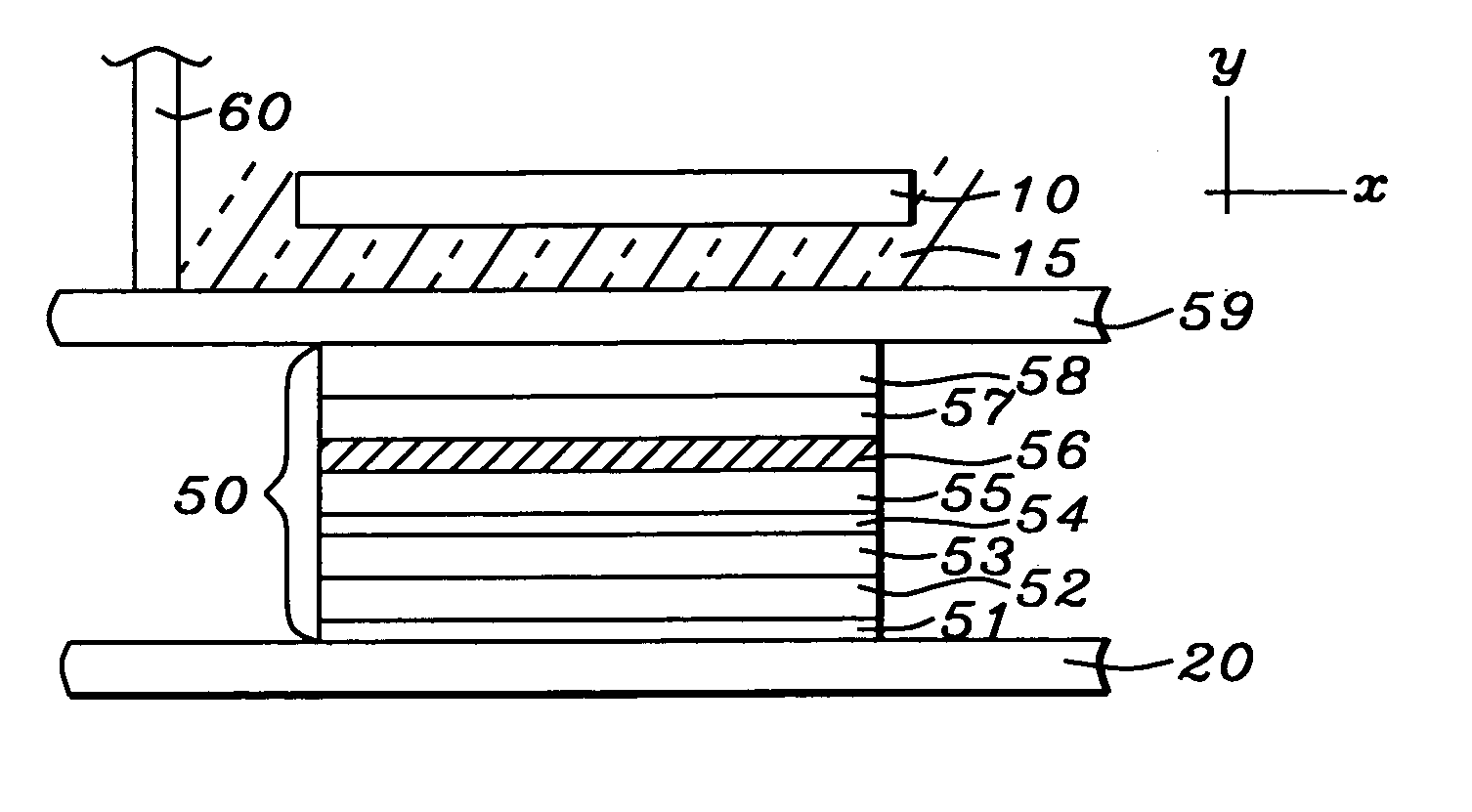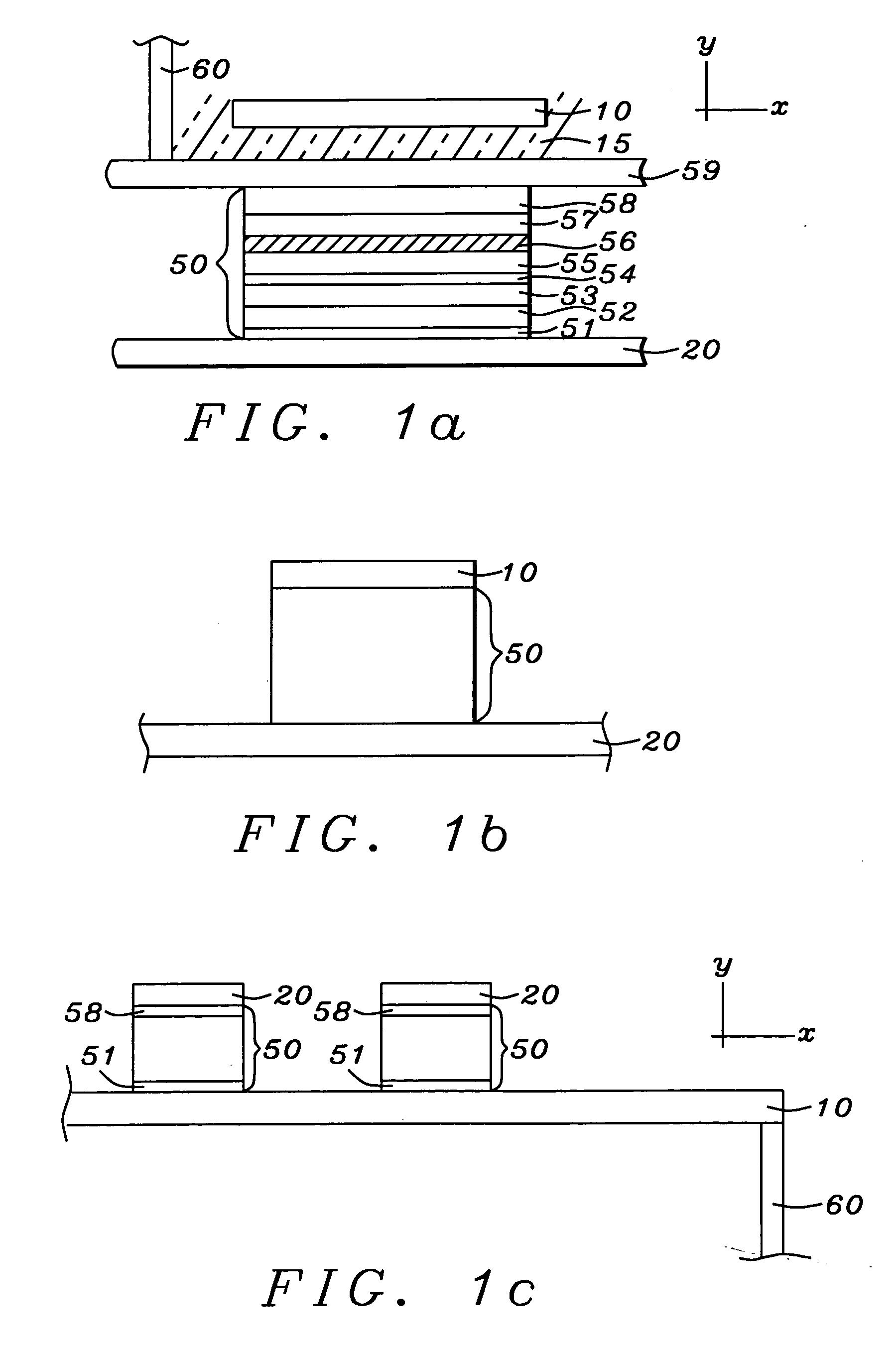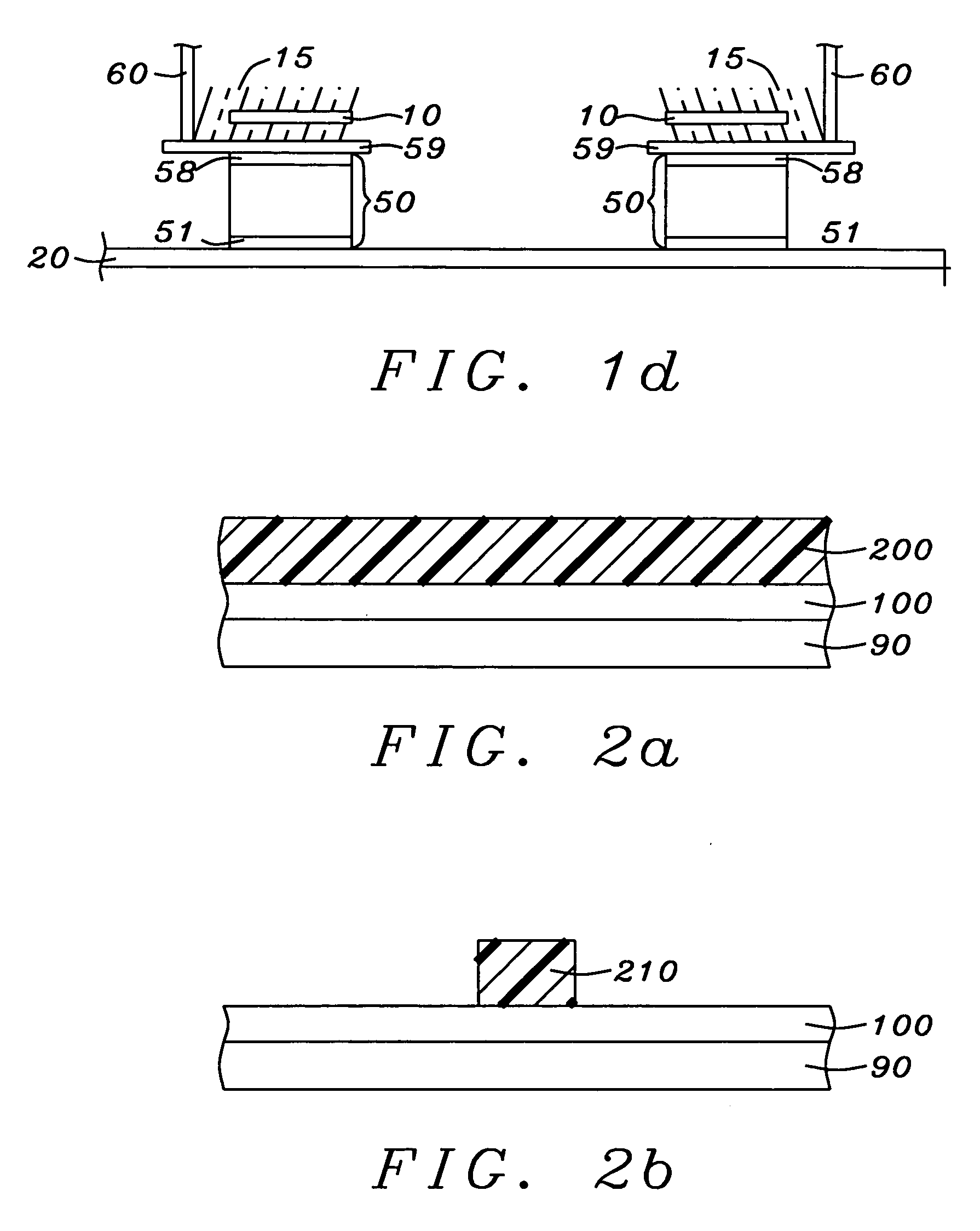[0009] Some degree of
anisotropy is necessary if an MTJ cell is to be capable of maintaining a magnetization direction and, thereby, to effectively store data even when write currents are zero. As cell sizes have continued to decrease, the technology has sought to provide a degree of
magnetic anisotropy by forming cells in a wide variety of shapes (eg. rectangles, diamonds, ellipses, etc.), so that the lack of inherent crystalline anisotropy is countered by a shape anisotropy. Yet this form of anisotropy brings with it its own problems. A particularly troublesome shape-related problem in MTJ devices results from non-uniform and uncontrollable edge-fields produced by shape anisotropy (a property of non-circular samples). As the
cell size decreases, these edge fields become relatively more important than the magnetization of the body of the cell and have an
adverse effect on the storage and reading of data. Although such shape anisotropies, when of sufficient magnitude, reduce the disadvantageous effects of super-
paramagnetism, they have the negative effect of requiring high currents to change the magnetization direction of the MTJ for the purpose of storing data.
[0010] One way of addressing the problem of the high currents needed to change the magnetization direction of a free layer when its shape anisotropy is high, is to provide a mechanism for concentrating the fields produced by lower current values. This approach was taken by Durlam et al. (U.S. Pat. No. 6,211,090 B1) who teach the formation of a flux
concentrator, which is a soft magnetic (NiFe) layer formed around a
copper damascene current carrying line. The layer is formed around three sides of the
copper line which forms the digit line at the underside of the MRAM cell.
[0011] Two additional approaches are taught by Nakao, (U.S. Pat. No. 6,509,621 B2), who, in one embodiment, forms a pinned layer out of a material that produces a high percentage of spin polarized electrons in the current and in another embodiment, applies an offsetting
magnetic field produced by a
magnetic shield to assist in causing field reversals in the cell element.
[0012] Yet another approach is taught by Sekiguchi et al., (U.S. Pat. No. 6,611,455 B2) who forms free
layers with easy axes that are perpendicular to the layer plane, then forms word and bit lines in the same plane.
[0013] The present invention also addresses the problem of reducing the
high current required to reorient the magnetization of the free layer in ultra-small MRAM cells wherein the super-paramagnetic behavior requires thick free
layers. It does so by forming word and / or bit lines of exceptional thinness, specifically under 100 nm, compared to conventional thicknesses of approximately 300 nm, thereby increasing the switching field at the free layer by as much as a factor of 2. An additional benefit of such thin lines is the ease of their fabrication. The patterning process for their formation requires the removal of less material and can eliminate the need for chemical mechanical
polishing (CMP), which can produce uncontrollable variations in line thicknesses. Finally, these ultra-thin lines are easily formed into a variety of configurations with respect to their positions relative to the MTJ cell. In the present invention the cell is positioned between the word and bit lines. In the following description the
general method of forming the lines will be described along with illustrations of their placement relative to the cell. SUMMARY OF THE INVENTION
[0014] A first object of this invention is to provide an MTJ MRAM cell that makes more efficient use of word and
bit line switching currents, the lines thereby producing magnetic fields of sufficient intensity for switching, while requiring lower currents to do so.
 Login to View More
Login to View More  Login to View More
Login to View More 


